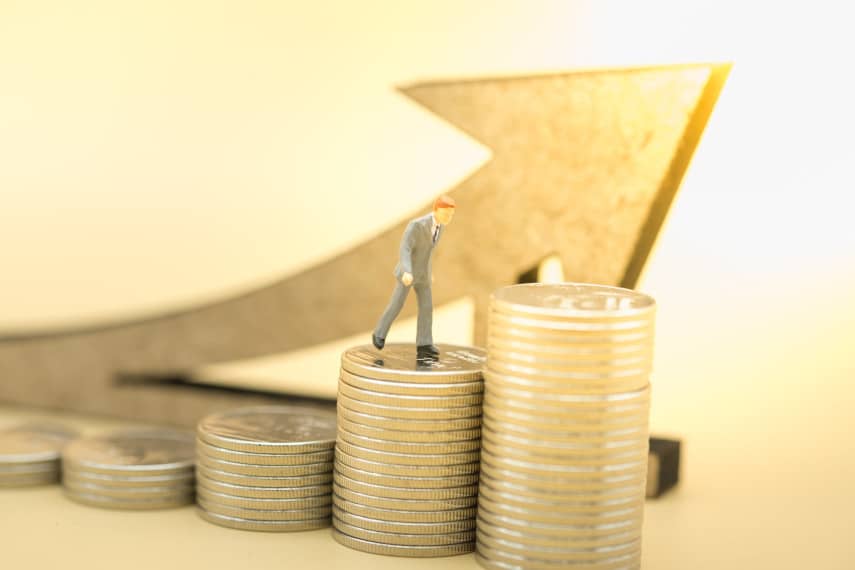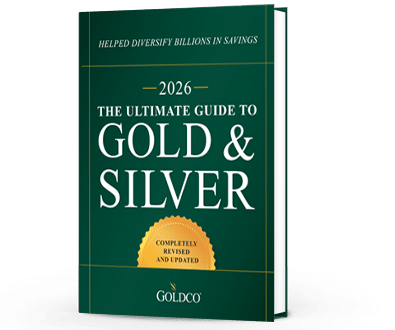6 Indicators of a Potential Recession
It seems that in the media today there are more and more mentions of the dreaded R-word: recession With growing economic uncertainty, the threat of potential recession seems to be growing as...
Economy

For consumers and investors today, inflation is one of the problems at the forefront of their minds. Prices of goods are rising everywhere they look, and there’s no telling when it will end. Inflation expectations are rising too, with more Americans expecting inflation to be a persistent problem in the future.
But the Federal Reserve isn’t treating inflation as a problem, continuing to double down on its already extraordinarily loose monetary policy. The Fed has added over $4 trillion to its balance sheet over the past year, and is planning to add at least $1.5 trillion in stimulus annually. The fact that all that newly created money is causing inflation doesn’t seem to phase the Fed one bit.
If you’re a consumer or investor, that’s not good news. It means that the prices you pay for food at the grocery store, for gas at the pump, or for a new house or rental could rise significantly before the Fed decides it’s a problem. And if you can’t afford those price increases, well, the Fed really doesn’t care. After all, it believes that inflation is only going to be transitory.
That means that you’re going to have to rely on your own savings and investments to bail you out as prices continue to rise. And you’d better hope that you have plenty of money as your cost of living increases. If you’re unable to keep up with inflation, you may find that you have some tough choices to make in the future as the dollars you’ve worked so hard to save and invest purchase less and less.
The problems with inflation are manyfold. First, there’s the disconnect between the historical definition of inflation and the modern definition of inflation. Traditionally, the economics profession defined inflation as an increase in the money supply. The effect of inflation, all other things being equal, was a rise in prices.
Today the economics profession defines inflation as a rise in the general price level. In part that’s to deflect blame from central banks for causing inflation. In this way, inflation (i.e. price increases) can be blamed on myriad other factors, such as shipping delays, bad weather, etc. The central bank’s role in creating inflation through the creation of money out of thin air is conveniently ignored.
The second problem is that there are multiple different measures of inflation, each of which gets used at certain times. And very often the Fed will look at the lowest measures of inflation in order to bolster its view that everything is rosy with the economy.
Take for instance the consumer price index (CPI). It consists of a “basket” of goods that makes up the spending of the average consumers. But that basket is constantly being rearranged, ostensibly for changes in consumer habits. Curiously, each readjustment always results in a lower inflation reading than before.
CPI’s current year-on-year increase is 5.4%. But if you used the CPI calculations that were in force prior to 1990, inflation would be at about 9%. And if you used the CPI calculations from 1980, inflation would be around 14%. That’s a pretty sizable difference.
Then there’s the fact that there are subsets of CPI, such as CPI excluding food and energy, or CPI excluding food, energy, and housing. These are supposed to be more “reliable” indicators of inflation, removing sectors that are subject to non-monetary price volatility. However, those sectors also make up a huge portion of the spending of most American households. And because those subsets often are lower than overall CPI, relying on them can mask the negative effects of inflation.
Then there’s the producer price index (PPI), which at one point was used instead of CPI to look for inflation. It is supposed to be a leading indicator of inflation, as price increases supposedly should show up for producers before those rising costs are passed along to consumers.
But PPI over the past decade or so has shown some significant volatility, meaning that it isn’t always a reliable indicator of inflation, or at least so the Fed thinks. Recently it’s up to nearly 20% year-on-year which, if that’s indicative of the future of inflation, is scary to think about.
Finally, there’s personal consumption expenditures (PCE), which has become the Fed’s preferred method of measuring inflation. PCE is supposed to measure the total amount of goods and services purchased in the economy. It has historically lagged behind CPI, normally about half a percentage point. But that lag is growing.
Year-on-year PCE increases were 13.5% in June, an astounding increase. But, like CPI, PCE also offers a “core” measurement that strips out food and energy, so that core PCE is generally even lower than the headline figure. And that’s what the Fed looks at when deciding what its stance of monetary policy will be.
The core PCE was 2% in March, and only 3.5% in June. That’s a significant rise, but not enough to get the Fed thinking that inflation is too hot. And it’s nowhere near the 5.4% year-on-year rise in CPI.
So when we see 10-15% price increases in stores, and 5.4% CPI increases and think inflation is off the charts, the Fed thinks inflation is actually 3.5% or less. And because the Fed announced that it would allow inflation to overshoot its 2% target until the longer-term average rate of inflation is over 2%, we’ve got a ways to go before the Fed thinks inflation is a problem.
It could be many more months before core PCE increases rise to a high enough level to get the Fed worried about inflation. Perhaps more ominously, core PCE growth could actually slow down or even fall due to rising inflation causing consumers to pull back on non-food and energy spending. That would send a signal to the Fed that inflation isn’t anything to worry about, when it really has become a major problem.
What this goes to show is that the Fed is likely still months away from tapering its monetary policy and bringing inflation under control. Three months worth of core PCE increases that are within the range the Fed wants to see isn’t going to cause the Fed to adjust its policy anytime soon. PCE would likely have to rise 5% year-on-year before the Fed sits up and takes notices.
That means that you shouldn’t expect diminishing inflation in the near future. Expect prices to continue to rise for at least a few more months before the Fed even acknowledges a problem. And once the Fed does admit there’s a problem, expect at least a few more months before any Fed policy response starts to be felt.
In the meantime, you’re going to have to be responsible for protecting your assets against inflation. That’s something that most American investors haven’t really had to think about. And without experience investing in an inflationary environment, many investors are going to be like ducks out of water.
Thankfully there are tried and true ways of protecting your assets against inflation, such as by owning precious metals like gold and silver. Precious metals often perform well in high inflation environments, offering growth that outpaces both inflation and markets. In the 1970s, for instance, both gold and silver saw an average annualized growth rate of over 30% for the decade. That’s the kind of price growth that would make any investor happy.
With the outlook for inflation looking bleak, now is the time to start thinking about protecting your savings before inflation takes a bite out of them. With numerous options to choose from, there’s a precious metals product or service for everyone.
If you have retirement savings that you want to protect, in a 401(k), IRA, TSP, or similar account, you can invest in a gold IRA or silver IRA, which hold gold or silver coins in an IRA account that offers the same tax advantages as a conventional IRA account. You can even roll over or transfer your existing retirement account assets into a precious metals IRA tax-free.
Or if you would rather just buy gold or silver coins to hold on your own for a rainy day, there are dozens of options available to you. From ¼-ounce gold coins to 2-ounce silver coins and everything in between, Goldco has something for everyone. And with our relationships with mints around the world, you can guarantee that the coins you’re buying are authentic.
Regardless of how you want to buy precious metals, Goldco’s experts can help you throughout the process. Give us a call today to learn more about how you can benefit from gold and silver and protect your wealth from the ravages of inflation.

